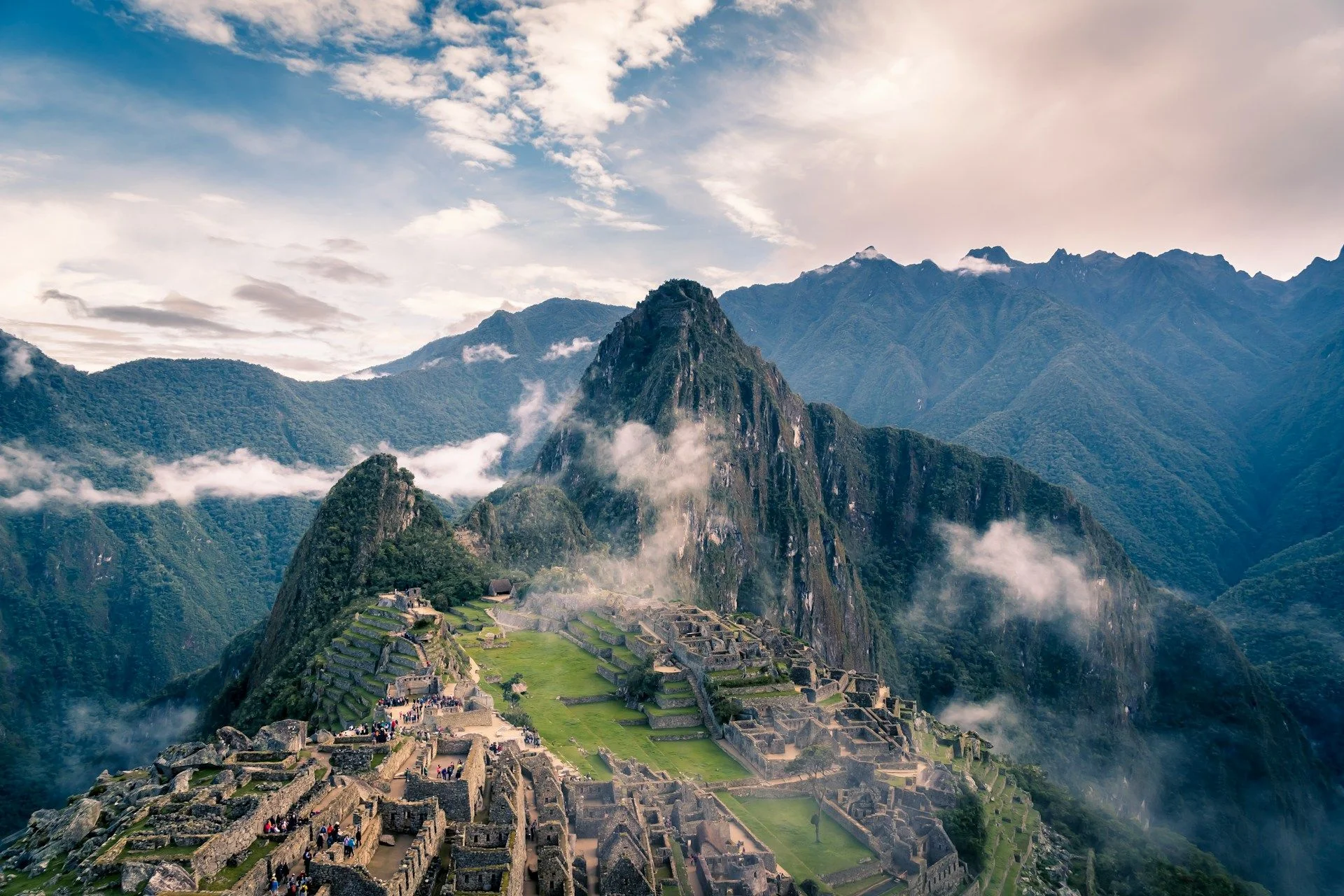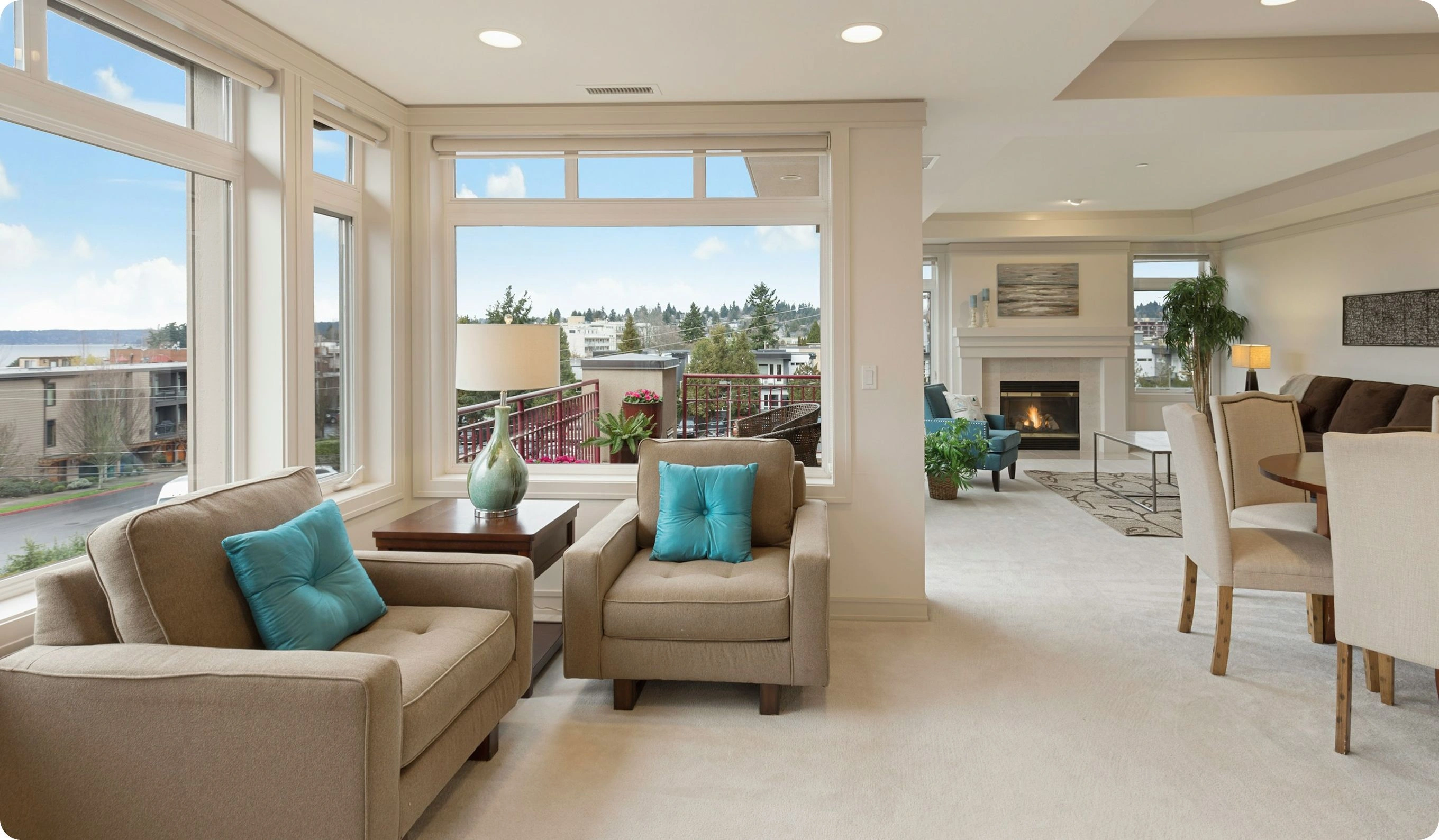Secondary real estate in PeruReal estate across desertscliffs and cathedrals

Best offers
in Peru
Benefits of investment in
Peru real estate
Urban growth and modernization in Lima
Peru’s capital continues to attract developers, professionals, and international firms — fueling demand for upgraded housing stock.
Affordable entry with room for appreciation
Real estate remains competitively priced, especially in emerging districts with improving infrastructure and amenities.
Established legal path for property ownership
Foreigners can own titled property with no special restrictions, and the buying process is supported by national law.
Urban growth and modernization in Lima
Peru’s capital continues to attract developers, professionals, and international firms — fueling demand for upgraded housing stock.
Affordable entry with room for appreciation
Real estate remains competitively priced, especially in emerging districts with improving infrastructure and amenities.
Established legal path for property ownership
Foreigners can own titled property with no special restrictions, and the buying process is supported by national law.

Useful articles
and recommendations from experts
Main title about secondary real estate in Peru
Why secondary properties attract buyers
Secondary real estate in Peru offers discerning investors and homeowners immediate access to fully operational assets in the country’s most dynamic urban, coastal and Andean markets. Pre-owned condos, apartments, townhouses and villas in Lima’s coastal districts, Cusco’s historic centre, Arequipa’s white-stone avenues and Trujillo’s colonial quarters arrive turnkey ready—fully connected to proven civic services such as SEDAPAL’s potable water networks, uninterrupted electricity via the national grid with diesel-generator backups, modern sewage and storm-water systems, and sealed asphalt roads administered by local municipalities. High-speed fibre-to-the-home broadband from Telefónica and Claro, complemented by 4G/5G mobile coverage from Entel and Bitel, ensures seamless connectivity for remote work and smart-home integration. Interiors often retain authentic regional character—Spanish-colonial tile floors in Lima, carved cedar ceilings in Cusco, volcanic-stone facades in Arequipa—alongside comprehensive upgrades: double-glazed windows rated for coastal winds or Andean temperature swings, bespoke open-plan kitchens with imported cabinetry and appliances, reinforced concrete footings engineered for seismic resilience, integrated solar-thermal water heaters, modern sanitary suites, air-conditioning systems and pre-wired smart-home controls. This genuine move-in readiness slashes carrying and finishing costs, accelerates rental cash flows, and empowers buyers—holiday-let operators, expatriate executives, local professionals, diaspora investors—to begin generating returns or enjoying premium living from day one. VelesClub Int.’s off-market sourcing and end-to-end advisory provide transparent valuation benchmarks and rigorous due diligence at every stage.
Established neighbourhoods
Peru’s secondary-market ecosystem is anchored by several mature precincts, each offering unique lifestyle and investment advantages. In Lima, Miraflores and Barranco combine restored colonial mansions and modern high-rise condos with direct Pacific views, private gardens and 24/7 security. San Isidro and La Molina host gated villas and townhouse enclaves adjacent to financial centres, international schools and golf clubs. Arequipa’s Cayma and Yanahuara quarters present white-stone heritage homes and mid-century flats with volcano vistas, renovated with energy-efficient glazing and turnkey interiors. Cusco’s Centro Histórico offers Inca-adobe casonas and boutique apartments steps from UNESCO sites, prized by short-term rental operators. Trujillo’s El Porvenir and Víctor Larco Herrera districts feature mixed-use complexes and heritage residences updated with modern MEP systems. Emerging corridors in Piura’s Castilla district, Iquitos’ Amazon-bank quarters and Puno’s Mirador zones deliver value-add prospects in refurbished colonial homes and small-scale multi-unit conversions. Across all micro-markets, civic services—reliable utility mains, sealed roads, scheduled waste collection, fibre broadband and integrated bus and rail links—operate seamlessly, ensuring minimal post-purchase capex and rapid community integration.
Who buys secondary real estate
The buyer profile in Peru’s secondary segment reflects the country’s economic diversity and tourism appeal. Holiday-let investors acquire beachfront condos in Lima’s Costa Verde, boutique apartments in Cusco and jungle lodges in Iquitos, leveraging VelesClub Int.’s property-management and rental-optimization services. Expatriate families working in mining, oil & gas, aid agencies and TECSUP secure high-end villas and townhouse units in Arequipa, Piura and Lima’s gated communities—valuing inclusive utility billing, compound security and proximity to international schools like Markham College and Newton College. Local professionals purchase renovated flats and heritage homes in Miraflores, San Isidro and Barranco for long-term residence, drawn by modern conveniences and cultural vibrancy. Diaspora investors from the USA, Europe and Asia target small multifamily blocks in Cusco’s tourist belts and Trujillo’s cultural quarters for yield-focused portfolios—guided by clear exit-strategy modelling and occupancy analytics from VelesClub Int. Across segments, common drivers include authentic architectural character, immediate move-in readiness, transparent title histories and integration into mature infrastructure networks that underpin predictable returns.
Market types and price ranges
Peru’s secondary-real-estate landscape spans a broad continuum of property types and price tiers to suit varied investment strategies and lifestyle preferences. Entry-level studio apartments and compact one-bedroom flats in peripheral Lima districts—San Juan de Lurigancho, Villa El Salvador—and smaller cities like Chiclayo and Huancayo start from approximately USD 50,000 to USD 100,000, offering basic turnkey finishes, communal gardens and proximity to bus and metro links. Mid-range two- to three-bedroom townhouses and duplex flats in Miraflores, San Borja, Arequipa’s Cayma and Piura’s Castilla trade between USD 120,000 and USD 300,000, featuring granite kitchen worktops, modern baths, private balconies and secure parking courts. Premium detached villas, luxury penthouses and restored colonial mansions in Barranco, San Isidro, Camaná and Trujillo command USD 350,000 to over USD 1 million—driven by ocean-front access, mountain vistas, bespoke interior fit-outs, landscaped gardens and resort-style facilities. For institutional and portfolio investors, small multi-unit complexes (4–8 units) in emerging corridors—Lima’s Surco avenue, Cusco’s Wanchaq zone, Iquitos’ Malecón Tarapacá—list between USD 200,000 and USD 500,000, delivering diversified rental streams and economies of scale. Financing through BBVA Continental, Interbank and local microfinance institutions offers mortgage and hire-purchase schemes at competitive rates (7%–10% per annum) with typical down payments of 20%–30%. Documented net rental yields average 5%–7% per annum across core corridors—benchmarks integrated by VelesClub Int. into proprietary yield-modelling and strategic acquisition-planning tools.
Legal process and protections
Acquiring secondary real estate in Peru follows the regulated conveyancing framework under the Urban Land and Small Properties Law and the Public Registry regulations. Transactions commence with a signed Purchase Agreement (Contrato de Compraventa) and payment of a reservation deposit—commonly 5%–10% held in escrow by a licensed notary. Buyers conduct due diligence: obtaining a land-title certificate from SUNARP to verify ownership and encumbrances; commissioning boundary and topographic surveys by registered engineers; ordering structural-condition, termite and environmental impact inspections; and auditing utility-connection status for SEDAPAL water meters and Enel Perú electricity connections. Upon satisfactory review, parties execute the Public Deed (Escritura Pública) before a notary; transfer tax (3% of declared value), registration fees and notarial honoraria are paid. The deed is then registered in SUNARP, granting formal title and public notice. Foreign nationals may acquire urban freehold property without additional restrictions. Statutory safeguards include seller warranties against latent defects and recourse through the Civil Court system. VelesClub Int. orchestrates end-to-end legal coordination—due diligence management, notarial liaison and registry filings—to ensure compliance, mitigate risks and deliver a seamless closing experience for domestic and international clients.
Best areas for secondary market
Certain micro-markets in Peru stand out for infrastructure maturity, amenity clustering and rental dynamics. Lima’s Miraflores and Barranco yield net returns of 5%–6% driven by corporate and tourism-driven leases. San Isidro and La Molina sustain yields of 5%–7% from high-income residency and diplomatic tenancy. Arequipa’s Cayma and Yanahuara achieve yields of 6% supported by university staff and medical personnel. Trujillo’s El Porvenir and Víctor Larco deliver 7% returns anchored by cultural festivals and student rentals. Emerging belts along the Pan-American Highway—Piura’s Talara corridor, Ica’s industrial access zones—offer yields near 8% as logistics and agribusiness investments expand. Each precinct benefits from sealed roads, reliable utility mains, high-speed broadband, integrated bus, metro and rail links, and proximity to international airports and hospitals—ensuring transparent pricing, consistent occupancy and strong resale liquidity. VelesClub Int.’s proprietary neighbourhood-scoring methodology and on-the-ground research guide clients to the sub-markets that optimally align yield targets, capital-growth forecasts and lifestyle preferences within Peru’s dynamic secondary-real-estate ecosystem.
Why choose secondary over new + VelesClub Int. support
Opting for secondary real estate in Peru delivers immediate possession, proven civic infrastructure and transparent historical performance—advantages seldom matched by speculative new-build projects facing permitting delays, material-cost volatility and contractor uncertainties. Buyers avoid pre-launch premiums and extended handover timelines by selecting turnkey assets with operational water, power and broadband networks, reinforced foundations and clear title chains. Secondary properties often showcase irreplaceable regional character—Spanish-colonial façades, carved cedar ceilings, patterned tile courtyards—that new constructions cannot replicate, enhancing cultural authenticity and long-term desirability. Lower entry premiums relative to green-field or off-plan schemes free up capital for interior personalization, sustainable upgrades (solar PV, rainwater harvesting) or strategic portfolio diversification across multiple micro-markets. Mature neighbourhood services—reliable SEDAPAL supply, uninterrupted Enel Perú power, sealed roads, integrated bus, metro and rail links, and high-speed fibre broadband—ensure seamless move-in and minimal post-purchase maintenance. VelesClub Int. enriches this acquisition journey with comprehensive end-to-end expertise: sourcing exclusive off-market listings, conducting exhaustive due diligence, negotiating optimal terms and managing all legal formalities. Our post-closing property management solutions—tenant placement, preventive maintenance coordination and transparent performance reporting—optimize occupancy rates and preserve capital value. Through proactive portfolio monitoring, annual market reviews and strategic advisory, VelesClub Int. empowers clients to maximize Peru’s secondary real estate potential with confidence, clarity and operational efficiency.



